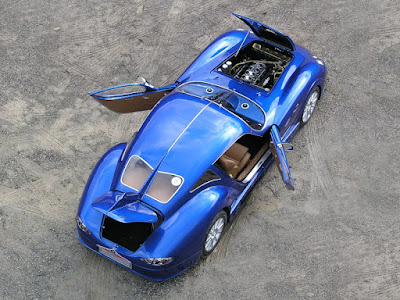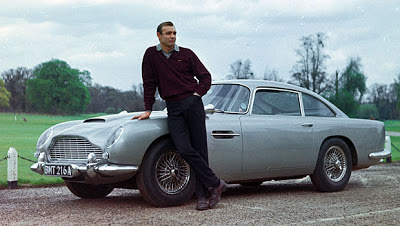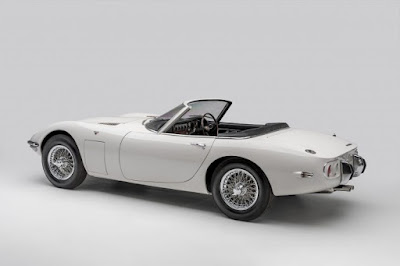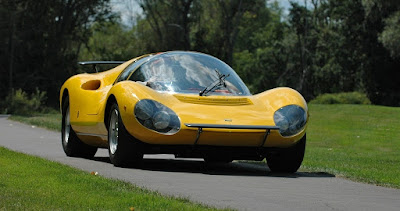Here is a unique sports car that looks like a classic grand touring car. Yes, this blue sports car on the picture below called F&M Antas V8 GT, actually, it is the sports car work of 2006 from a Lugnano, Italy based automotive workshop called Faralli & Mazzanti (F&M).
 |
| 2006 F&M Antas V8 GT sports coupé. (Picture from: https://bit.ly/3l947IB) |
This small auto workshop was estabilished in 2002 by the two Italian gentlemen named Walter Faralli, specializing in the restoration of classic cars and Luca Mazzanti, specializing in design and development of handcrafted supercars. So clearly, in earliest days, this joint-venture company which was intended both to restore vehicles and to practice design skills.
 |
| 2006 F&M Antas V8 GT sports coupé. (Picture from: https://bit.ly/3l947IB) |
The GT sports car mentioned above is the first 'Berlinetta' creation built by the Lugnano-based workshop and is completely inspired by the philosophy of special sports cars in the past, such as the use of aluminum and the body making done by a manually forged.
 |
| 2006 F&M Antas V8 GT sports coupé. (Picture from: https://bit.ly/3l947IB) |
As for Antas, the car name is taken from a word that comes from the ancient Tuscan language of the Etruscans, which means 'Eagle,' the the noblest and most audacious dominator of the open spaces. So became the Antas V8 GT, a Faralli & Mazzanti's 2-door road-legal sports coupé featured with the rear-wheel drive and front engined layout.
 |
| 2006 F&M Antas V8 GT sports coupé. (Picture from: https://bit.ly/3l947IB) |
This Antas F&M sports car uses a Maserati 4.7 liter naturally aspirated V8 engine which is conventionally fed by a carburetor and endowed with a pleasing elasticity that allows it to run fast while the driver was gave the sensation of the past great touring cars driving as well.
Well, the 1,300 kg weighted car's engine is capable of developing a power of 306 bhp (310 PS / 228 kW) at 6,000 rpm, and a maximum torque of 422 N m (311 lb ft / 43 kgm) at 3,500 rpm. Those engine power numbers is then channeled to the rear wheels via a 5-speed manual gearbox. It is claimed to be able to make it run fast up to a top speed of 270 kph (168 mph).
 |
| 2006 F&M Antas V8 GT sports coupé. (Picture from: https://bit.ly/3l947IB) |
The Antas V8 GT is presented in public for the first time at the Grimaldi Forum in Monaco, on the occasion of the opening of the 'Top Marques Monaco' auto expo which brings together under one roof all the most famous, exclusive, and desirable automotive brands.
As quoted from Carscoops, it was also stated that at the delivery, Antas was equipped within a case wrapped in blue velvet inscribed with silver plate with identification number; inside is a photography book and a DVD documenting the manufacture of the vehicle.
As information, in the 2010, the F&M auto workshop was split into 2 companies, namely Mazzanti Automobili and Faralli Restauri, each of which handled work according to their specialties. One of the newest creations of the Mazzanti Evantra and Evantra Millecavalli supercars, launched by Mazzanti Automobili in 2010 and 2016. *** [FROM VARIOUS SOURCES | MAZZANTI AUTOMOBILI | FARALLI RESTAURI | CARSCOOPS | SUPERCARS | CARFOLIO | WIKIWAND ]
Note: This blog can be accessed via your smart phone




















































